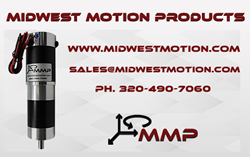Optical Liquid Silicone Rubber Introduced at Proto Labs
Injection-molded optical LSR shines new light into product development possibilities
MAPLE PLAIN, Minn.--Rapid prototyping and low-volume manufacturer Proto Labs, Inc. (NYSE:PRLB) has added optical-grade liquid silicone rubber (LSR) to its existing lineup of moldable plastic, metal and LSR materials. High-performance optical LSR is transparent, extremely flexible and starting to replace glass in many optical applications.
The engineering-grade thermoset offers a host of benefits for those developing components and products inside the lighting industry. Optical LSR does not discolor or lose transparency with age or with exposure to heat or UV light; it is significantly lighter than glass and most other plastics; and it is scratch and crack resistant, among many other advantages.
"One of the more exciting aspects that optical silicone presents to a designer is its ability to reduce the bill of materials in a final assembly," explains Jeff Schipper, Proto Labs product manager for LSR. "In a lighting application, for example, you have a lens and seal that would traditionally be two parts. With optical LSR, you can combined the two into a single part, which reduces cost and overall inventory."
Proto Labs will be in Las Vegas this week (Feb. 24-26) at the Strategies in Light conference discussing optical LSR along with its other quick-turn injection molding, CNC machining and 3D printing capabilities.
About Proto Labs, Inc.
Proto Labs is a leading online and technology-enabled quick-turn manufacturer of custom parts for prototyping and short-run production. Proto Labs provides "Real Parts, Really Fast" by utilizing injection molding, computer numerical control (CNC) machining and additive manufacturing to produce parts for product designers and engineers worldwide. For more information, visit protolabs.com.
Featured Product

Midwest Motion Products is a leading provider of robust and reliable Motion Control Products.
MMP specializes in supplying high-quality Brushed & Brushless DC Motors & Gearmotors for Robotics and Automation Equipment with a wide range of motor windings and gear ratios. With an impressive track record of more than 8,000 released DC Gearmotors designs and over 2,000,000 individual part numbers, we are renowned for our ability to handle large-scale orders. Due to our huge on-hand inventory, we are also well known for lightning-fast delivery of our standard products. We take pride in our dedicated customer service and our team of knowledgeable sales and engineering experts who are ready to assist you with custom design solutions tailored to your specific application. Additionally, we also offer a wide range of complimentary products, such as DC Motor Controls, DC Linear Actuators, AC-DC power Supplies, and DC Servo Amplifiers and others.
